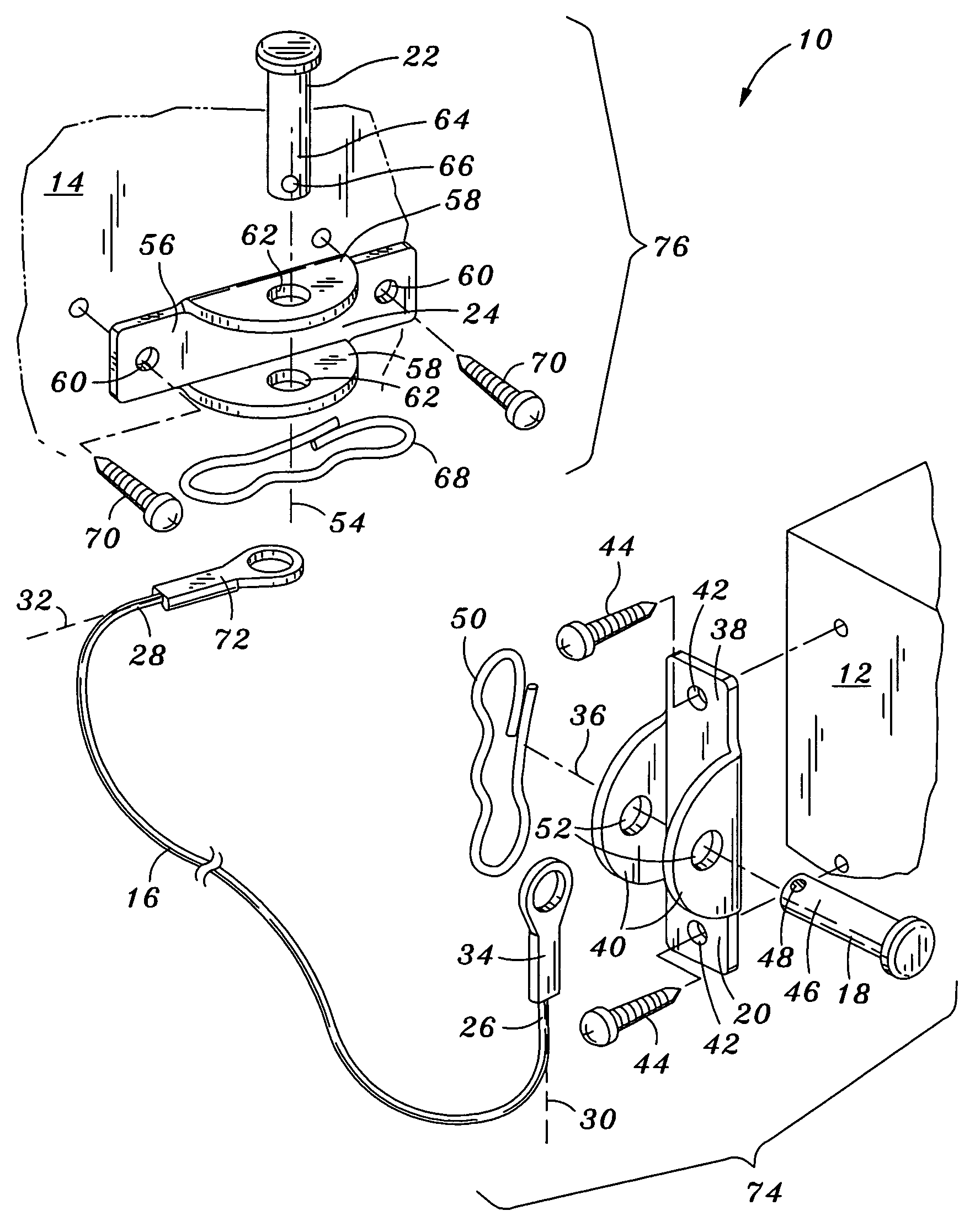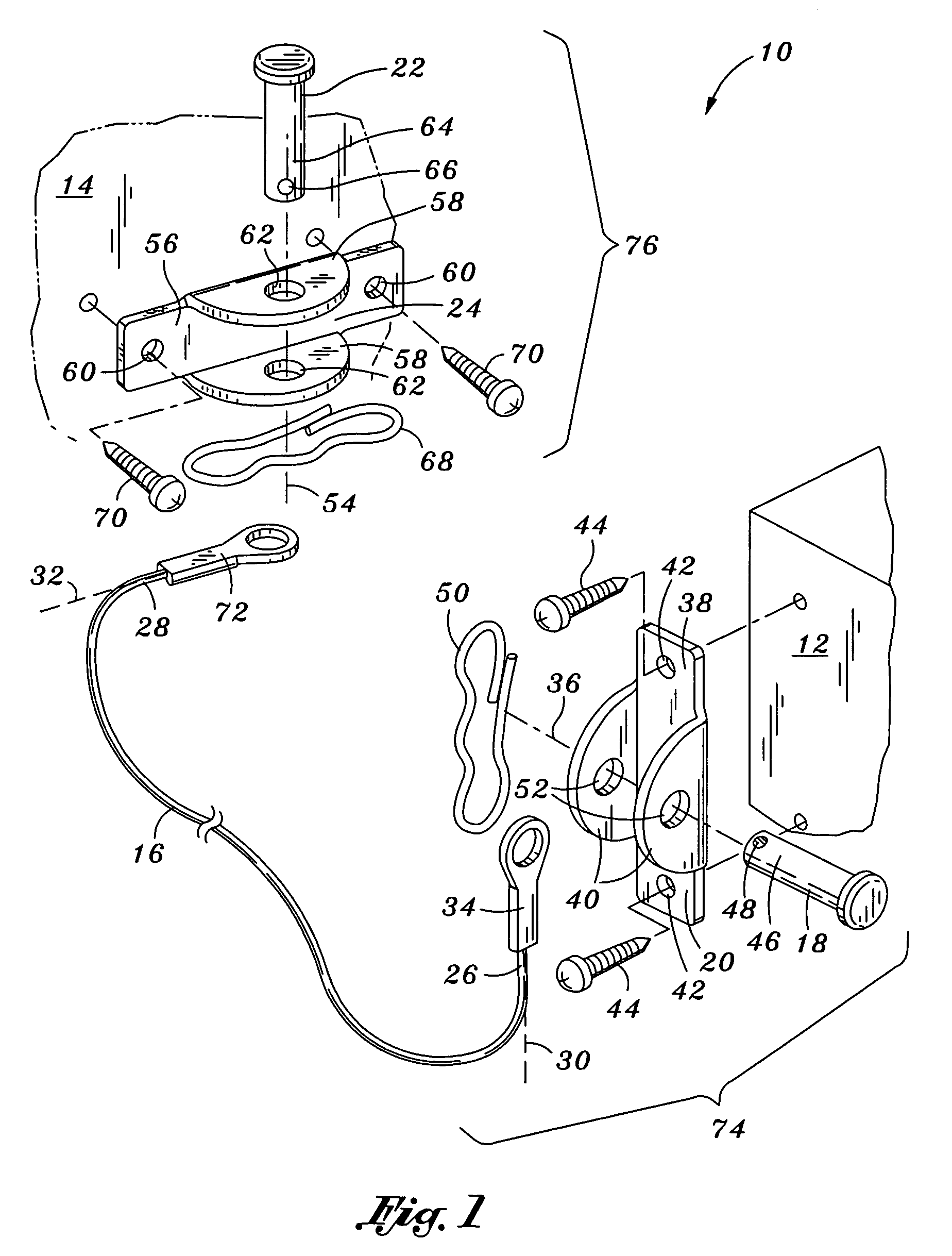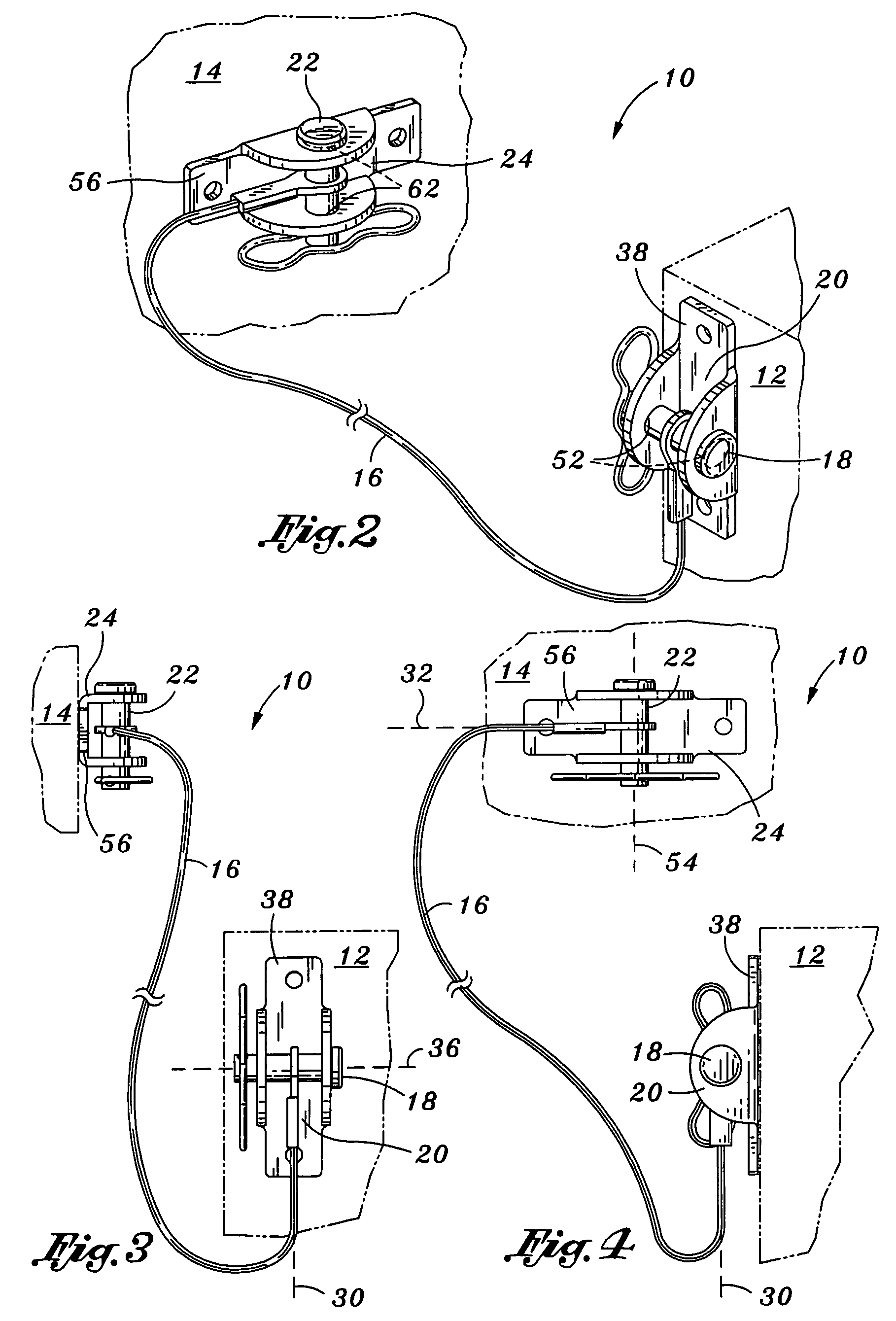Anti-tipover device
a technology of anti-tipover and anti-tipover plate, which is applied in the direction of furniture parts, machine supports, other domestic objects, etc., can solve the problems of causing tremendous force on the bookshelf, and affecting the comfort of guests, so as to mitigate the occurrence of mechanical fracture and mitigate the generation of torque
- Summary
- Abstract
- Description
- Claims
- Application Information
AI Technical Summary
Benefits of technology
Problems solved by technology
Method used
Image
Examples
Embodiment Construction
[0026]Referring now to the drawings wherein the showings are for purposes of illustrating preferred embodiments of the present invention only and not for purposes of limiting the same, FIG. 1 is an exploded front perspective view of an anti-tipover device 10 for maintaining an object 12 adjacent a structure 14, such as a wall. Although the present invention is disclosed according to its use with furniture, the anti-tipover device 10 may be used with any object 12 that is disposed adjacent to any structure 14. It is contemplated that the present invention may be used with lamps, vases, grandfather clocks, and other standing objects. Further, the structure 14 disclosed as part of the present invention may include ceilings, floors, or other free standing large objects suitable for stabilizing other smaller or less stable objects.
[0027]According to one aspect of the present invention, provided is the anti-tipover device 10 for retaining the object 12 adjacent the structure 14, the anti-...
PUM
 Login to View More
Login to View More Abstract
Description
Claims
Application Information
 Login to View More
Login to View More - R&D
- Intellectual Property
- Life Sciences
- Materials
- Tech Scout
- Unparalleled Data Quality
- Higher Quality Content
- 60% Fewer Hallucinations
Browse by: Latest US Patents, China's latest patents, Technical Efficacy Thesaurus, Application Domain, Technology Topic, Popular Technical Reports.
© 2025 PatSnap. All rights reserved.Legal|Privacy policy|Modern Slavery Act Transparency Statement|Sitemap|About US| Contact US: help@patsnap.com



